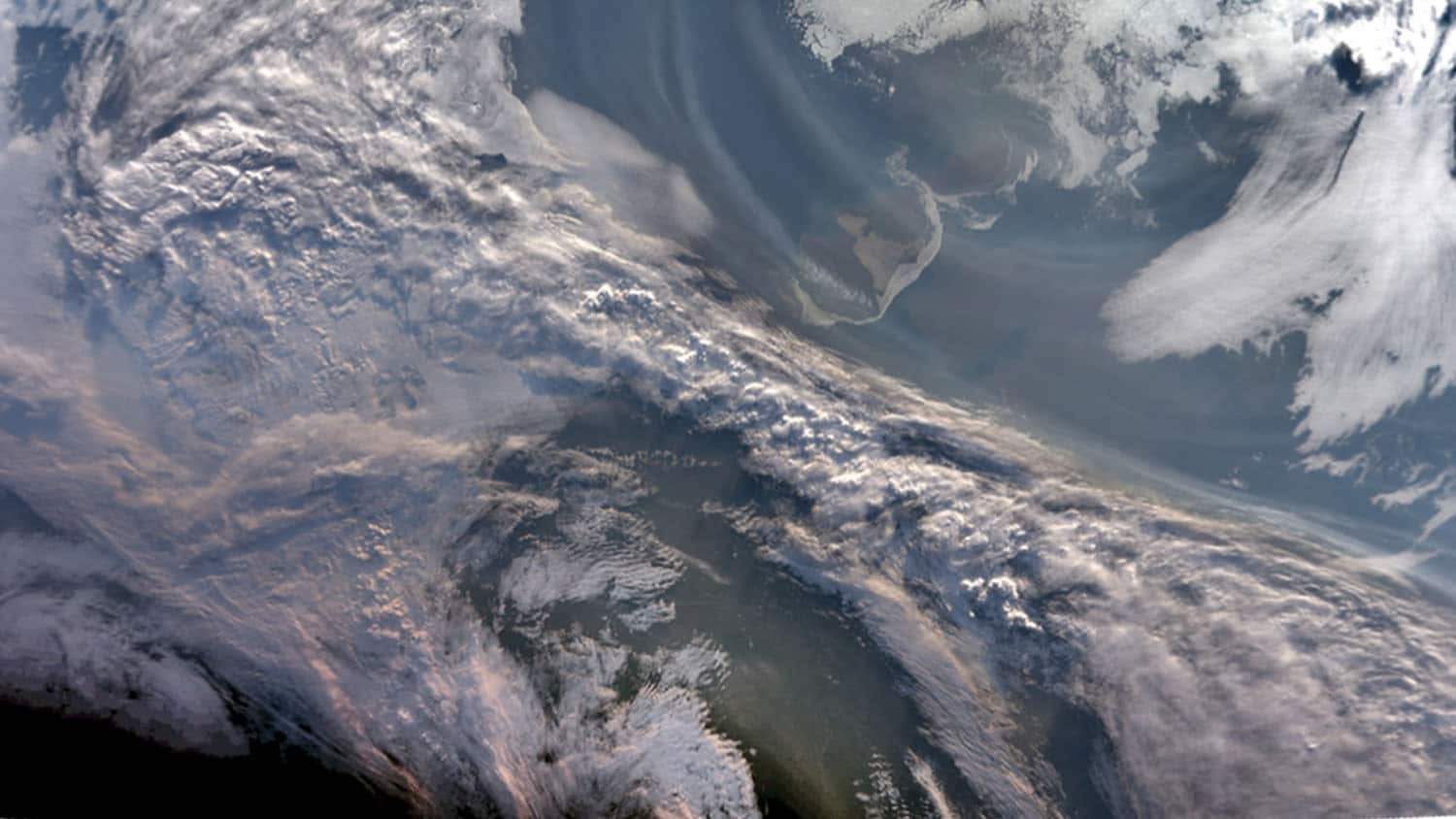Climate Change-Driven Fires Could Double Soluble Iron in Northern Oceans

For Immediate Release
As the climate changes, increased Northern Hemisphere wildfires could almost double the amount of smoke particulates – and nutrients such as iron (Fe) – in the atmosphere. The deposition of these nutrients into the oceans can change the way that carbon dioxide (CO2) is stored and released by affecting ocean productivity, particularly in the North Atlantic.
An international team of researchers used computer models to look at both climate and anthropogenic drivers of fire across various socio-economic scenarios. They found that overall, climate change could increase fire-driven Fe emissions by at least 1.7–1.8 times compared with direct anthropogenic drivers of fires alone, with some variations between the Northern and Southern hemispheres.
“Fire is an important part of the Earth’s overall ecosystem, and it’s connected to many things that seem distant from it, including CO2 storage in the oceans,” says Elisa Bergas-Masso, currently a research scholar at North Carolina State University and corresponding author of the study. Bergas-Masso did the work while a doctoral student with the Barcelona Supercomputing Center in Spain.
Wildfire releases a highly soluble form of Fe into the atmosphere, from which it is deposited into oceans. Soluble Fe is an important nutrient for phytoplankton living in the open ocean, so increased supply can lead to more phytoplankton, more photosynthesis, and ultimately more carbon sequestration to ocean depths as they die or are consumed by zooplankton and the carbon sinks to the bottom of the ocean as “marine snow.”
The models also showed differences in the way that climate-driven fire might affect Fe deposition in oceans in the Northern and Southern hemispheres. They project that increased iron in the North Atlantic might boost productivity by up to 20% annually (and up to 40% during the summer’s fire season), if levels of other macronutrients necessary for phytoplankton growth remain stable. However, even if those other nutrient levels decline, the increase in iron could offset those losses by up to 8%.
In the Southern Hemisphere, where the human drivers of Fe ocean deposition such as fossil fuel emissions and deforesation are also important, the model projected that the increase in climate-driven fires could offset Fe losses from decreased human activity due to improved air quality or land stewardship.
“Fire is a destructive but essential part of maintaining the health of Earth’s extremely complex and interconnected ecosystem,” says Douglas Hamilton, assistant professor of marine, earth and atmospheric sciences at NC State and study co-author.
“Models like this help us to determine how future changes in fire regimes will influence other parts of the Earth System,” Hamilton says. “Although our study predicts an almost doubling of fire-Fe emissions by century end, recent extreme events in Canada suggest we could already be exceeding these projections. That is why it is critical to understand now the impacts of changing fire regimes on the ocean’s health.”
The work appears in Nature Climate Change and was supported in part by the European Research Council and the National Aeronautics and Space Administration (grant 80NSSC24K0446). María Gonçalves Ageitos and Carlos Pérez García-Pando from the Barcelona Supercomputing Center, Stelios Myriokefalitakis from the National Observatory of Athens, and Sagar Rathod from the University of Wisconsin-Madison, also contributed to the work.
-peake-
Note to editors: An abstract follows.
“Future climate-driven fires may boost ocean productivity in the iron-limited North Atlantic”
DOI: 10.1038/s41558-025-02356-4
Authors: Elisa Bergas-Masso, María Gonçalves Ageitos, Carlos Pérez García-Pando, Barcelona Supercomputing Center, Spain; Douglas S. Hamilton, North Carolina State University; Stelios Myriokefalitakis, National Observatory of Athens, Greece; Sagar Rathod, University of Wisconsin-Madison
Published: June 13 in Nature Climate Change
Abstract:
Rapid shifts in fire regimes affect the carbon cycle by releasing carbon and nutrients such as iron (Fe), potentially enhancing marine productivity and carbon export. Here we use fire emission projections and Earth system models to examine how climate-driven changes in fire emissions may alter soluble Fe (SFe) deposition and productivity. By century’s end, climate change could increase Fe emissions from fires by 1.7–1.8 times beyond projections considering only direct human influences. Model projections show rising SFe deposition in Northern Hemisphere high latitudes under increasing socio-economic activity, potentially boosting the impact of SFe deposition on productivity in the Fe-limited North Atlantic by up to 20% annually (40% in summer), assuming stable macronutrient levels. However, declining macronutrient availability may shrink Fe-limited areas, where climate-driven fires could offset productivity losses by 7–8%. In the Southern Ocean, fossil fuel emissions primarily control SFe deposition, as reductions in anthropogenic fires counterbalance climate-driven increases.
This post was originally published in NC State News.


